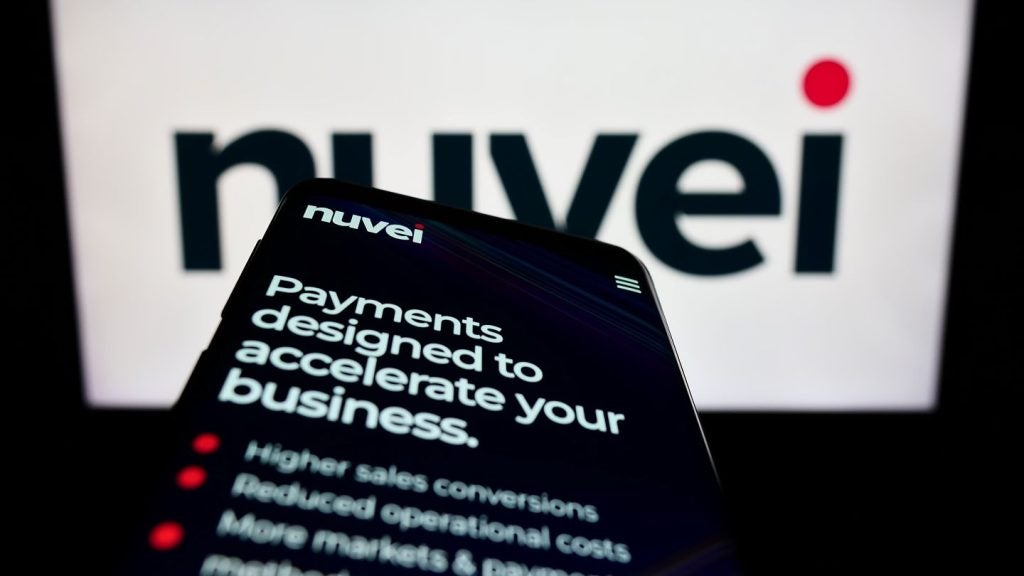A start-up company with only seven staff members, Coin has literally come out of nowhere, causing a flurry of media attention. The computerised card can hold up to eight cards on one credit card sized device. Ellie Chambers takes a closer look at the device that could replace your wallet
Coin is not CEO Kanishk Parashar’s first attempt at curing bulging wallet sydrome.

Access deeper industry intelligence
Experience unmatched clarity with a single platform that combines unique data, AI, and human expertise.
Before launching the seven person start-up in San Francisco, he was involved in the creation of an app that stored payment details and broadcast them to cashiers, along with a photo ID of the user, whenever they walked into a shop.
However, SmartMarket, as the app was called, was doomed never to get off the ground.
Consumers had no idea which merchants were subscribed to the scheme and were reluctant to change their payment behaviour by putting transactions through the app, rather than reaching for a card.
Faced by a lack of enthusiasm from consumers, the project foundered.

US Tariffs are shifting - will you react or anticipate?
Don’t let policy changes catch you off guard. Stay proactive with real-time data and expert analysis.
By GlobalDataOne card to rule them all
In contrast to SmartMarket, using Coin requires little change in consumer behaviour, resembling and working like a magstripe card.
It works with a partnered app, through which users load card details using a small card reader. The card then syncs with the phone over Bluetooth.
A button switches between cards and a small screen displays which card is in use.
Dean Stewart, senior director of product management at ATM giant Diebold, comments: "This is the most innovative multiple card device I’ve seen in years, so I’d say this is a pretty unique approach.
"I think if people are getting warm and comfortable with the idea of a mobile wallet, then a product like this could gain some acceptance as a halfway step.
"There’s certainly a critical mass of people who would find it an interesting enough novelty to pay what they are asking for it."
Stewart also sees a future for Coin beyond eight cards. He says: "In my opinion, the person who finds this interesting probably has more than eight cards.
"It will need to continue to advance technologically to keep pace, but there are probably enough interested people in the US to keep it going for a long time."
Too good to be true?
Critics of Coin have pointed out that due to the almost global adoption of EMV, the device is largely irrelevant outside the US.
David Parker, CEO and founder of Polymath Consulting, says: "The world outside of the USA is going EMV, thus it has to be questioned what the opportunity for this product is outside of the US as it stands today."
Stewart argues that magstripe is still widely accepted in the US. He says: "In the US there’s 10m POS devices that accept magstripe so it will certainly be ubiquitous here for the next few years.
"I think the US is going to be slow to fully convert to EMV, so they’ll still have a good market window."
Parker also notes that the display panel is not a new aspect. He comments:
"In terms of the display panel aspect Niagra cards and others offer this capability and this can be used to display any aspect from loyalty points to multiple purse balances on multi-currency cards.
"Given how relatively unsuccessful combined cards have been this may well be a nice US niche card product, but it is not probably something that will ever become truly mass market."
Other players
Additionally, Coin is not the only company with big ideas about consolidating cards.
Online retail giant Amazon filed a patent application on 5 September 2013 that describes a device that shares many features with Coin’s. The abstract on the patent application read:
"Disclosed are various embodiments for the creation of a payment card that is programmable by a user in order to access one or more accounts from multiple financial institutions and/or other institutions.
"The payment card includes an account selection application that facilitates selection of one of the transaction accounts associated with the payment card.
"A processor circuit then determines a code that corresponds with the respective one of the transaction accounts and facilitates the embodiment of the corresponding code to a dynamic magnetic strip located on the payment card."
Is it not yet known what patent protections Coin has on its device, but one thing is certain: Amazon could cause a big headache for this small company.
If it ain’t broke, don’t fix it
When Coin’s device became available for pre-order at $50 (rising to $100 mid-December), the company met its pre-order goal of $50,000 within 40 minutes of its launch video’s release.
But despite this popularity, and the widespread media attention, critics question what Coin offers in the long term.
Michael Nuciforo, founder of mobile and digital consultancy Keatan, says: "The issue Coin has is it has fallen into the problem of actually solving nothing – moving from four cards in your wallet to one is really not that exciting.
"If consumers are really concerned about the number of cards in their wallet or purse they tend to solve it themselves – it’s called a ‘spring clean’.
"Coin have also misunderstood that people will continue to carry their wallet or purse to hold their Driver’s license and other ID, the fact it might be 15 mm thick instead of 25 mm doesn’t really factor into the equation."
Consultant Roy Vella explains that merchants may be wary of Coin’s technology.
He says: "The technology’s been around for a while, mostly used by criminals for skimming cards and the replicating them in mag stripe markets, like the States.
"The biggest concern, of course, is precisely that this makes it even easier to replicate cards and use them at physical POS."
"In the end, I position Coin in the "Ain’t Broke, Don’t Fix It" category.
"I love the principle as an early-adopter geek who wants to digitise my life but I doubt the vast majority of consumers will find it easier or more convenient than the way they pay today."







